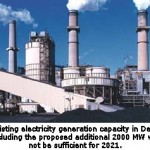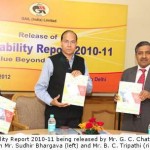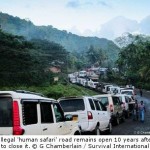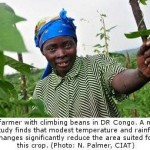
Title: Harnessing Variable Renewables: A Guide to the Balancing Challenge
ISBN: 978-92-64-11138-7
Author: IEA Secretariat
Publisher: The Online Bookshop, IEA (2011)
Language: English
200 Pages (Paperback)
Brussels – A new book from the International Energy Agency (IEA) – “Harnessing Variable Renewables: A Guide to the Balancing Challenge” – presents a novel method of assessing the resources needed to balance supply and demand in power systems with large shares of ‘variable’ renewables, such as solar photovoltaic, wind and tidal energy. The report, which features case studies of eight geographic regions with sharply different power attributes, shows that there is a greater technical potential for balancing variable renewable energy output than is commonly assumed.
Wind and solar energy have been growing at double-digit rates for at least five years – a trend that must continue if a more secure, diverse and sustainable energy mix is to be achieved. The IEA World Energy Outlook, for example, foresees that 45% of global electricity supply will need to come from renewable sources by 2035 if the level of carbon dioxide in the atmosphere is to be limited to 450 parts per million – roughly consistent with a global temperature rise of no more than 2 degrees C. Under this scenario, around 17% of electricity would need to come from variable renewables, up from 1% in 2008.
But this raises a host of important challenges, particularly because of the uncertainties that are inherent in variable electricity supply. How can such large shares of variable electricity best be integrated without jeopardizing the stability of existing power systems? What is the maximum share of electricity that can come from variable sources?
The answer to these questions is that it depends on the flexibility of the power system in question. The new IEA book provides a tool to assess this flexibility, and in the process serves to reassure policy makers that the challenges of integrating large shares of variable renewables in power systems are far from insurmountable.
Assessing Flexible Resources
‘Harnessing Variable Renewables: A Guide to the Balancing Challenge’ lays out a four-step method for assessing existing flexible resources, which can then be used to balance increasingly variable supply and demand. Step One of this Flexibility Assessment (FAST) Method assesses the ability of the different flexible resources to change their production or consumption; Step Two examines the aspects of the power system that will constrain them from doing so; Step Three calculates the maximum requirement for flexibility of a given system resulting from fluctuating demand and output from wind plants and the like; and Step Four identifies how much more variability can be balanced with existing flexible resources.
The book features eight case studies in which the FAST Method is applied to eight geographic areas with very different characteristics. The resulting analysis shows that each region has the technical resources to balance large shares of variable renewable energy.
Potentials range from 19% in the least flexible area assessed (Japan) to 63% in the most flexible area (Denmark). The IEA also assessed the resources of the British Isles (Great Britain and Ireland together), 31%; the Iberian Peninsula (Spain and Portugal together), 27%; Mexico, 29%; the Nordic Power Market (Denmark, Finland, Norway and Sweden), 48%; the Western Interconnection of the United States, 45%; and the area operated by the New Brunswick System Operator in Eastern Canada, 37%.
This range of results is due to the different flexible resources found in these areas. Norway, for example, has extensive hydropower, which is a very flexible resource; while Japan’s power plants, many of which run on nuclear and coal, are not as flexible (e.g., it takes longer for these sources to respond to fluctuations in demand).
“While some areas are clearly more flexible than others, all power areas assessed show that greater technical potential for balancing variable renewable energy output exists than is commonly supposed,” said Richard Jones, the IEA Deputy Executive Director. He launched the book at EREC 2011 – Europe’s Renewable Energy Policy Conference, on 24 May in Brussels.
“The results from these case studies demonstrate that variability needs not be an impediment to deployment,” Ambassador Jones said. “As long as power systems and markets are properly configured so they can get the best use of their flexible resources, large shares of variable renewables are entirely feasible from the balancing perspective.”
Check the following link to read/download the publication:
http://www.iea.org/w/bookshop/add.aspx?id=405
About the IEA
The International Energy Agency (IEA) is an autonomous organization which works to ensure reliable, affordable and clean energy for its 28 member countries and beyond. Founded in response to the 1973/4 oil crisis, the IEA’s initial role was to help countries co-ordinate a collective response to major disruptions in oil supply through the release of emergency oil stocks to the markets. While this continues to be a key aspect of its work, the IEA has evolved and expanded. It is at the heart of global dialogue on energy, providing reliable and unbiased research, statistics, analysis and recommendations. For more information, visit www.iea.org.
Source: International Energy Agency (IEA).














